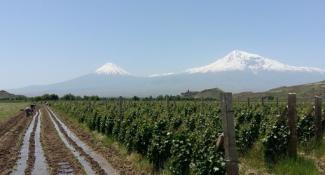For decades, water usage in Armenia’s fertile Ararat Valley has suffered from a classic case of the tragedy of the commons. Corruption and weak enforcement of existing regulations, government decisions informed by outdated data and calculations, a rapid increase in the number of fish farms, and poor infrastructure resulted in users extracting far more water than could naturally recharge. Due to this over-exploitation from 2013 to 2020, groundwater levels decreased by six to nine meters on average, and in some areas by as much as 15 meters. More than 30 communities in the Ararat Valley lost access to their drinking and irrigation water. In an effort to stem the loss of water, over the past six years, USAID/Armenia’s Advanced Science & Partnerships for Integrated Resource Development (ASPIRED) project has transformed Armenia’s approach to water management and put it on a path to sustainability.
Sustainable management of Armenia’s water resources is critical for the agricultural sector and future economic growth. The Ararat Valley’s groundwater reserves are used for drinking water, irrigation, fish farms, and to cool Armenia’s Metsamor nuclear power plant. Approximately 30 percent of the region’s population is engaged in agriculture, and the sector contributes roughly 15 percent to GDP annually. The Ararat Valley is the bread basket of Armenia, producing over one third of the country’s total agricultural output annually, and is home to a significant portion of Armenia’s vineyards and orchards. Many farms and communities in the valley rely on decades-old, Soviet-era irrigation equipment, much of which loses a significant amount of the water extracted from the ground.[[nid:424661]]

